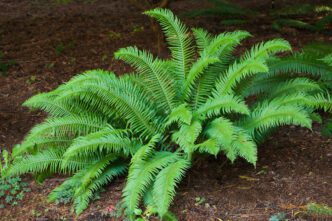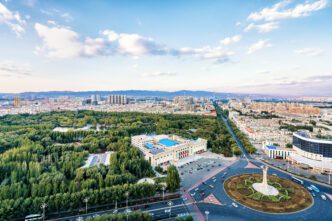Executive Summary
- A Chinese-led scientific team discovered naturally formed rare earth minerals, specifically nanoscale monazite, within a living fern.
- This breakthrough offers a “green circular model” for sustainable rare earth extraction, known as phytomining, and can also contribute to remediating polluted soil.
- The discovery marks the earliest reported instance of rare earth elements crystallizing into a mineral phase inside a hyperaccumulator plant, opening new possibilities for direct recovery of functional rare earth materials.
The Story So Far
- The global demand for high-value rare earth elements, critical for various technologies, has long been met by traditional extraction methods that pose significant environmental challenges, including soil pollution and ecological damage. This ongoing concern has spurred a search for innovative, sustainable, and environmentally conscious approaches to both resource development and the remediation of affected areas.
Why This Matters
- The discovery of naturally formed rare earth minerals within living ferns introduces a groundbreaking “green circular model” for rare earth extraction, validating the feasibility of phytomining as a sustainable resource development method. This innovative, plant-based approach offers the dual benefit of recovering critical elements and simultaneously remediating polluted soil and restoring the ecology of rare earth tailings, potentially mitigating the environmental impact of traditional mining practices.
Who Thinks What?
- The Chinese-led scientific team and their collaborators reported the first discovery of naturally formed rare earth minerals within a living fern, believing this breakthrough offers new possibilities for the direct recovery of functional rare earth element materials.
- The researchers view this innovative, plant-based approach as a “green circular model” that substantiates the feasibility of “phytomining,” contributing to sustainable rare earth resource development and the remediation of polluted soil and mining tailings.
A Chinese-led scientific team has reported the first-ever discovery of naturally formed rare earth minerals within a living fern, presenting a “green circular model” for the extraction of these high-value elements. The breakthrough, published this month in the peer-reviewed journal Environmental Science & Technology, offers new possibilities for sustainable rare earth resource development and soil remediation.
Discovery Details
Researchers identified nanoscale monazite, a mineral containing rare earth elements, within the living plant. This marks what they describe as the earliest reported instance of rare earth elements crystallizing into a mineral phase inside a hyperaccumulator plant.
The team stated that this finding “opens new possibilities for the direct recovery of functional rare earth element materials.” The discovery is significant for its potential to transform how these critical minerals are sourced.
Implications for Sustainable Extraction
This innovative, plant-based approach is seen as substantiating the feasibility of “phytomining,” a method that uses plants to extract metals from the soil. Beyond mineral extraction, the method could also contribute to remediating polluted soil and restoring the ecology of rare earth tailings, according to the institute behind the study.
The research introduces an “innovative, plant-based approach for sustainable rare earth element resource development,” the team noted in their publication.
Collaborative Research
The study was a collaborative effort involving scientists from the Guangzhou Institute of Geochemistry under the Chinese Academy of Sciences. They worked alongside an earth scientist from the geosciences department at Virginia Tech in the United States.
Key Takeaways
This groundbreaking research highlights a novel, environmentally conscious method for rare earth extraction. By leveraging living plants, the team proposes a dual benefit of resource recovery and ecological restoration for areas affected by rare earth mining, potentially mitigating environmental concerns associated with traditional extraction methods.








